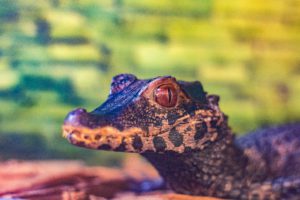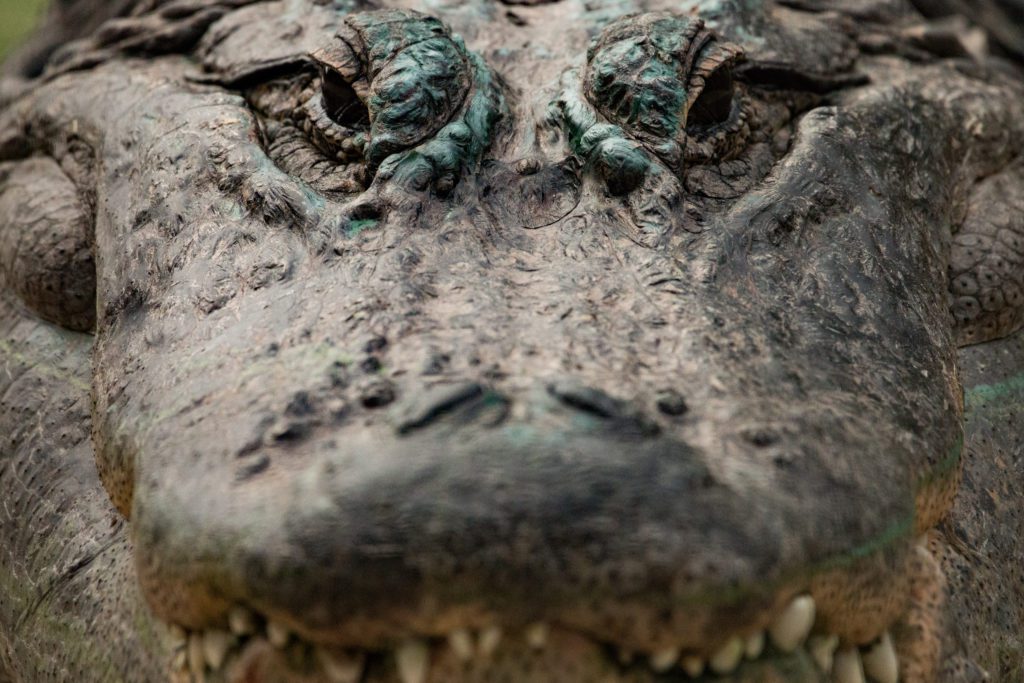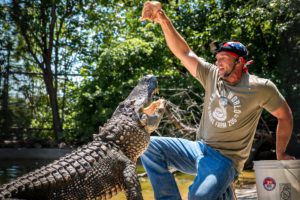World Croc Day is June 17, 2019. To celebrate, we sat down with resident croc enthusiast, Jarrod Forthman, to talk about these incredible animals, and answer some questions submitted by our Facebook and Instagram followers.
Before we get started talking about crocodilians, tell us a little about you and how you got started working with them.
Growing up overseas, my dad always told me about the reptiles in the United States, specifically Texas. That was when my interest in all-things reptiles first began. A few years later when I was 8 years old, my dad got deployed to Texas. One of our first stops was the Snake Farm! That was the first time I had seen reptiles in human care, and what ultimately led me to my career here at the zoo.
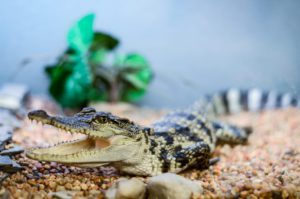
Do you have a favorite crocodilian?
It’s so hard to pick just one! I definitely love Cuban crocodiles. They’re like the bulldogs of the crocodilian world. They’re super fast and have gnarly looking horns on their head. Their teeth are even colored to look bloodstained. It doesn’t get much more awesome than that!
Although Cuban crocodiles are my favorite, I’m also very passionate about Siamese crocodiles. Siamese crocs are one of the most endangered species of crocodilians in the world. I’m really passionate about conservation, so I love being able to work with these rare creatures here at Animal World & Snake Farm Zoo. You can actually come out and meet Mushu the Siamese Croc during our Sunday afternoon Croc Shows!
Speaking of Siamese Crocs, Facebook user Stephanie asks, “Why are Siamese Crocs so endangered?”
Sadly, humans. Habitat loss, over hunting, and human encroachment are huge factors that are contributing to the declining numbers of these amazing animals.
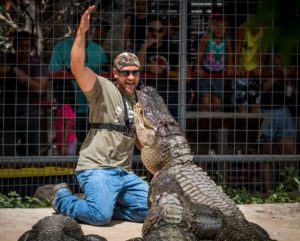
Facebook user Jacy wants to know the difference between and alligator and crocodile.
That’s easy! One says “see you later,” and the other says “see you in a while.” Just kidding! The main difference between the two is their attitude. Crocodiles, whether they are big or small, think they’re 20 feet long and 2,000 pounds. They are very bold and think that no prey is too big. Alligators on the other hand, are generally more shy, preying on much smaller food items. There are also several physical characteristics that make them pretty easy to tell apart. Gators have broad, U-shaped snouts. Crocs have much more pointy snouts. Crocs also have sharper teeth which can all be seen when their mouth is closed.
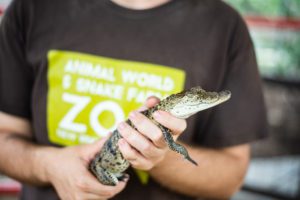
Mandi from Instagram asks, “What kind of crocs do you have at the Zoo?”
We have American alligators, Siamese crocodiles, Morelet’s crocodiles, Nile crocodiles, and Dwarf caiman.
What does daily care of alligators and crocodiles look like? What do they eat?
Daily care is making sure the animal has clean fresh water. You also want to check that the range of temperatures they are in will allow them to thermoregulate properly. Lighting is also important. For crocs that live inside, you need to provide UV lighting.
As far as diet goes, younger crocodilians require daily feeding opportunities. Adults will eat once or twice per week, depending on the species, age, and time of year. Crocodilians prey on a wide range of reptiles, mammals, birds, and fish. Larger crocs are capable of preying on large hoofstock, whereas things like gharials are primarily fish eaters.
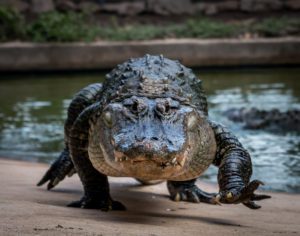
What is your favorite thing about the Sunday Croc Show?
My favorite part about the Sunday Croc Show is educating people. I love being able to be part of people learning to love animals that they might initially fear. It might be the person in the crowd who comes to the Zoo terrified of alligators, but ends up holding one for a photo at the end of the show. Or the little 8-year-old kid in the crowd who loves reptiles, and after watching the show and learning about how endangered Siamese crocs like Mushu are, goes on to become the next great conservationist of his time.
